The topic is quite old, but I'll leave my solution for reference.
In xaml ListView definition put your context menu:
<ListView Name="m_list" >
<ListView.ContextMenu>
<ContextMenu>
<MenuItem Header="menuItem1" Click="ContextMenuItem1Clicked" />
<MenuItem Header="menuItem2" Click="ContextMenuItem2Clicked" />
</ContextMenu>
</ListView.ContextMenu>
...
</ListView>
Now, in the code, define two event handlers that will fire up on clicking respective menu item:
private void ContextMenuItem1Clicked(object sender, RoutedEventArgs e)
{
// handle the event for the selected ListViewItem accessing it by
ListViewItem selected_lvi = this.m_list.SelectedItem as ListViewItem;
}
private void ContextMenuItem2Clicked(object sender, RoutedEventArgs e)
{
// handle the event for the selected ListViewItem accessing it by
ListViewItem selected_lvi = this.m_list.SelectedItem as ListViewItem;
}
ListView can accommodate objects, which means that the selected_lvi can be of type of your object. Just cast is to proper type.
I hope this helps.
Best regards,
Mike
